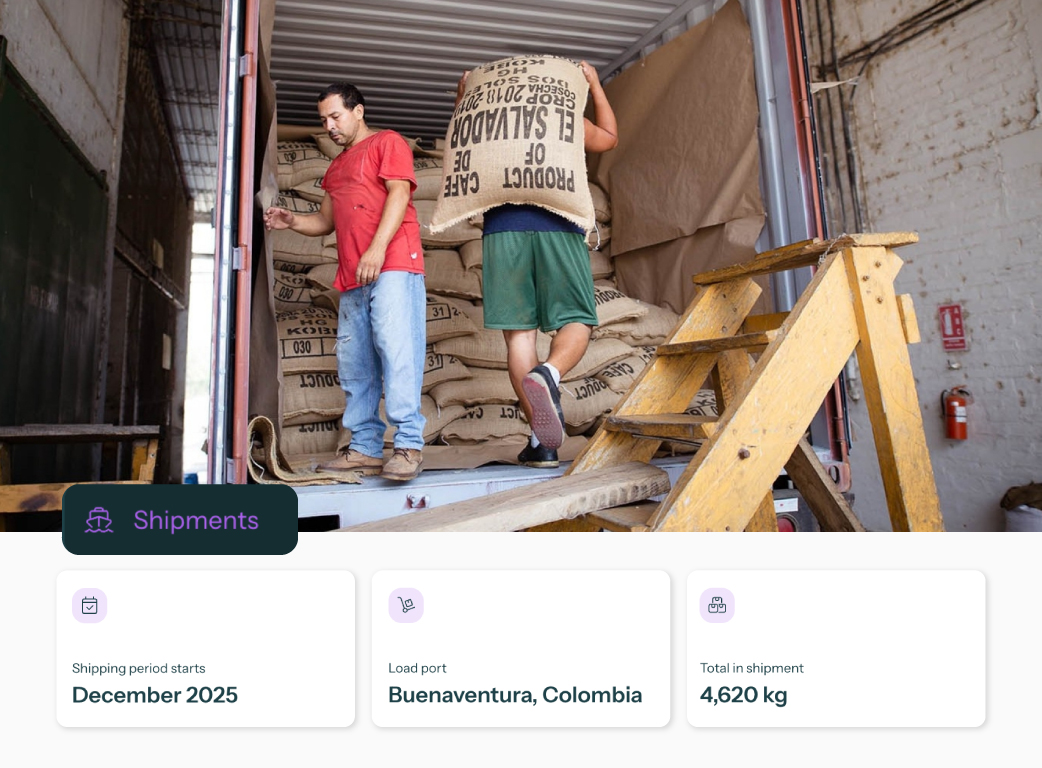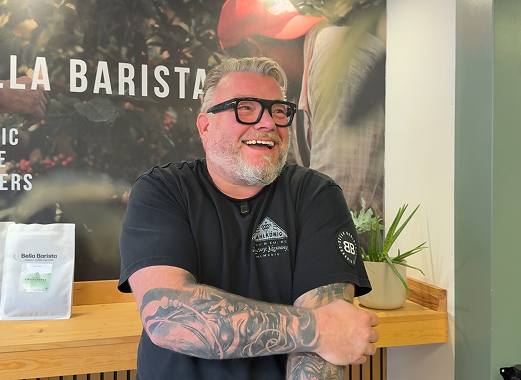Algrano and the African Fine Coffees Association are joining forces. We are bringing a delegation of more than 20—including buyers from the US and Europe—to Ethiopia. Join our panel on "Why buying from Africa feels hard" and register for our Open Cupping.
.png)
.png)
Algrano and the African Fine Coffees Association are joining forces. We are bringing a delegation of more than 20—including buyers from the US and Europe—to Ethiopia. Join our panel on "Why buying from Africa feels hard" and register for our Open Cupping.
.png)
The US coffee tariff is gone, but the specific 40% duty on Brazilian coffee hasn't dropped. Here is the breakdown of the conflicting orders and what you need to know before approving your next shipment.

Track your upcoming shipments easily in your Algrano account. See your contracts onboard the container, the shipping dates, the load port, and find the contacts of the responsible exporter.
Algrano and the African Fine Coffees Association are joining forces. We are bringing a delegation of more than 20—including buyers from the US and Europe—to Ethiopia. Join our panel on "Why buying from Africa feels hard" and register for our Open Cupping.
.png)

Track your upcoming shipments easily in your Algrano account. See your contracts onboard the container, the shipping dates, the load port, and find the contacts of the responsible exporter.

Nico Herr of Mountain Harvest shares her experience in sales to roasters, alongside one of her partners, Luci Ramirez from Humboldt Bay Coffee. They walk you through what it takes to pitch coffees to roasters, and how to start strong relationships.
%201%402x%20(4).png)
Learn how Verified Sellers can set up offers correctly and make it easier for roasters to buy.
Join us in Zurich or Raleigh to celebrate two of our partners: Sancoffee and Clearpath. Get an exclusive look at their amazing auction lots before they are gone!
.png)
.png)
Higher quality from Brazil's 2025 harvest is being held back by producers waiting for better prices, creating a challenge for roasters. Keep reading to learn the essential strategies you'll need to navigate the market and secure your supply of coffee.
.png)
Sam LaRobardiere, owner of Theory Coffee Roasters, talks about how he was caught in a reactive cycle of stress and compromise buying spot, but he found a way forward.

Discover how Marcel Binley of Bella Barista turned crippling cash flow and scary logistics into peace of mind, business certainty, and 30-40% anticipated growth through a partnership with Algrano.
Get insights from industry leaders, sourcing guides, and harvest updates sent straight into your inbox.

Your 18-month guide to shipments and arrivals, helping you plan ahead and enjoy the unique benefits of working directly with producers.

Producers are getting more business and premiums, while new roasters are sourcing more coffee than ever with confidence. Learn about Algrano’s impact, pre-financing, data sharing with producers, and what's beyond relationship coffee.
%201.png)
.png)
Algrano and the African Fine Coffees Association are joining forces. We are bringing a delegation of more than 20—including buyers from the US and Europe—to Ethiopia. Join our panel on "Why buying from Africa feels hard" and register for our Open Cupping.
.png)
The US coffee tariff is gone, but the specific 40% duty on Brazilian coffee hasn't dropped. Here is the breakdown of the conflicting orders and what you need to know before approving your next shipment.

Track your upcoming shipments easily in your Algrano account. See your contracts onboard the container, the shipping dates, the load port, and find the contacts of the responsible exporter.
.png)
Join us in Zurich or Raleigh to celebrate two of our partners: Sancoffee and Clearpath. Get an exclusive look at their amazing auction lots before they are gone!
.png)
Higher quality from Brazil's 2025 harvest is being held back by producers waiting for better prices, creating a challenge for roasters. Keep reading to learn the essential strategies you'll need to navigate the market and secure your supply of coffee.
.png)
Sam LaRobardiere, owner of Theory Coffee Roasters, talks about how he was caught in a reactive cycle of stress and compromise buying spot, but he found a way forward.

Discover how Marcel Binley of Bella Barista turned crippling cash flow and scary logistics into peace of mind, business certainty, and 30-40% anticipated growth through a partnership with Algrano.
%20(1).png)
This post brings the most impactful insights from our recent Roasters Panel on the 50% Brazilian Tariffs, offering strategic guidance on how to navigate the shift.

Nico Herr of Mountain Harvest shares her experience in sales to roasters, alongside one of her partners, Luci Ramirez from Humboldt Bay Coffee. They walk you through what it takes to pitch coffees to roasters, and how to start strong relationships.
%201%402x%20(7).png)
Meet Makicuna, the team on the ground in Ecuador who's cutting through the complexity—high costs, quality swings, and a history of broken trust—to bring European roasters the best specialty lots. Read co-founder André's breakdown of the country's unique coffee regions, the issues holding back its potential, and how their transparent partnerships are setting a new standard.
%201%402x%20(4).png)
Learn how Verified Sellers can set up offers correctly and make it easier for roasters to buy.
.png)
After a challenging year marked by defaults and supply issues, Peruvian producers are reporting a strong, promising crop with increased volume and consistent quality. However, new market pressures are emerging. Details in our latest update!